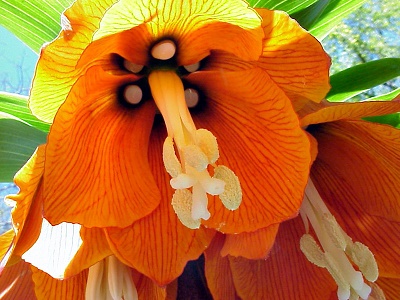
Plan to grow varieties that you can’t buy in supermarkets, like multi-coloured beans!
Image: Dwarf French Bean Seeds - Colour Mix from Suttons
The start of a new year is the perfect time to reflect on last season’s successes and failures in the garden. There’s nothing quite as satisfying as sitting down with a large piece of paper and a cup of tea and dreaming about what you want to grow in the months ahead. To make sure you enjoy a long season of successful crops, here are some top tips for planning your vegetable garden from the Suttons horticultural team…
Write a wishlist
Start by making a list of all the fruit and veg you’d like to grow. Consider what worked well in the past and rule out any crops that didn’t thrive in your growing environment. Don’t forget to research new vegetable seed varieties before you settle on your final choice. It might be easy to stick with what you know, but new vegetable cultivars are constantly being developed and tested to improve flavour, yields and disease resistance.
Only grow what you love to eat
It’s unlikely you’ll be able to grow everything on your wishlist, so narrow it down by prioritising your family’s favourite fruit and veg. Other things will stay on the list because the homegrown varieties taste so much better than anything you can buy (definitely broad beans!) Some vegetables are worth growing yourself because they’re cheap and easy to raise from seed but costly to buy in the supermarket.
Mind the gap!
When your list is ready, add columns for the sowing dates, planting out dates and harvest dates. A further column where you estimate the number of weeks from planting out to harvest will help you to identify any quick- growing crops that could be squeezed into gaps (like radishes that take just 3 weeks).
Summer cropping vegetables are usually started off indoors and planted out in about May when the soil warms up. But to make your veg plot productive for the longest possible time, you’ll need to remember to start your autumn and winter vegetable seeds off mid-summer, so they’re ready to plant out as soon as your other crops finish.
Draw a map of your vegetable plot
A visual map is the best way to plan your vegetable garden. Measure it accurately (you can even use squared paper and a scale) so you can see exactly how much room you have and how many plants you’ll be able to fit into the space. You should always sow a few extra seeds to allow for some to fail, or to plug unexpected gaps if something is harvested early.
Plot the plants on your map
Add the crops to your map to ensure you’re making best use of every square inch of space. Could you squeeze some thin rows of spring onions or radishes between widely spaced rows of bigger things that take longer to grow? By the time your bigger crops have swelled to fill the space, your quick crops will already have finished.
Start by adding vines like squash and pumpkins to the outside of your beds, as they need lots of space to spread out. Then think about the best place for crops that need support, like peas and beans, to make sure they don’t cast too much shade over sun-loving veg. Fill the remaining space with everything else.
If you keep your map for next year, it will help you to rotate crops around the garden and avoid a buildup of pests and diseases in the soil.
Don’t forget containers
Many vegetables are perfectly happy growing in containers, freeing up your plot for other things that prefer more space. If you’re struggling to fit everything in, consider what you could move to a large pot. Crops that are harvested in late summer like peppers, courgettes and tomatoes could be grown in large containers to make way for a succession of distinct, spring, summer and autumn crops with shorter growing seasons.
Order veg seeds in plenty of time
Don’t run the risk of your favourite vegetable seeds and plants selling out. Once you’ve decided what you want to grow and how much you’ll need to buy, place your order online and have it all delivered to your doorstep.
It’s worth joining a scheme like Suttons Gardening Club before you place your order. For just £10 a year you get a 10% discount off every order, £20 worth of vouchers (4 x £5), access to exclusive special offers and seasonal tips to help you in the garden.
Organise your seeds
Make yourself a seed storage system with sections for each month. When your seeds arrive, simply place them in the appropriate section so you won’t forget to sow them when the time comes.
It was the United States Army officer and statesman Colin Powell who said: “There are no secrets to success. It’s the result of preparation, hard work, and learning from failure.” And while it’s not likely that he was thinking about vegetable growing at the time, it’s a premise that certainly holds true in the garden! Planning your veg plot in advance will help you to make the most use of your space and harvest healthy veg over a longer season. Check out Suttons Gardening Club to see how to save money on seeds and plants for the next year.














